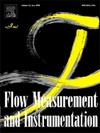基于多尺度融合注意法和Kolmogorov-Arnold网络的三偏心蝶阀流量特性预测
IF 2.3
3区 工程技术
Q2 ENGINEERING, MECHANICAL
引用次数: 0
摘要
三偏心蝶阀广泛应用于石油化工、能源等行业。流量系数和动液扭矩是三偏心蝶阀的关键参数。对这些参数进行快速、准确的预测,可以提高流体流量的控制精度,保证阀门的高效、稳定运行。深度学习技术为预测流体特性提供了一种很有前途的方法。本文提出了一种基于多尺度融合注意模块(MSFA)和Kolmogorov-Arnold网络(KAN)的新型网络结构来预测流量系数和流体动力扭矩。提出的MSFA模块增强了多尺度感知能力,并集成了高层和低层特征,以改善信息表示。KAN网络用可学习的b样条基函数代替多层感知机(MLP)的线性权值和激活函数,提高了回归预测的性能。结果表明,所提出的MSFA模块有效提高了MLP和KAN等基础模型的预测精度和收敛性。MSFA-KAN模型的平均绝对百分比误差(MAPE)为2.61%。本文章由计算机程序翻译,如有差异,请以英文原文为准。
Flow characteristics prediction of the tri-eccentric butterfly valve based on the Multi-Scale Fusion Attention method and Kolmogorov-Arnold network
The tri-eccentric butterfly valve is widely used in the petrochemical, energy, and other industries. The flow coefficient and hydrodynamic torque are key parameters of the tri-eccentric butterfly valve. Rapid and accurate prediction of these parameters can improve the control accuracy of fluid flow and ensure the efficient and stable operation of the valve. Deep learning techniques offer a promising approach for predicting flow characteristics. This paper proposed a novel network structure based on the Multi-Scale Fusion Attention module (MSFA) and Kolmogorov-Arnold networks (KAN) to predict the flow coefficient and hydrodynamic torque. The proposed MSFA module enhances the multi-scale perception ability and integrates both high-level and low-level features to improve information representation. The KAN network replaces the linear weights and activation functions of Multilayer Perceptron (MLP) with learnable B-spline basis functions, which enhances regression prediction performance. The results indicate that the proposed MSFA module effectively improves both the prediction accuracy and convergence of base models such as MLP and KAN. The MSFA-KAN model achieves a mean absolute percentage error (MAPE) of 2.61 %.
求助全文
通过发布文献求助,成功后即可免费获取论文全文。
去求助
来源期刊

Flow Measurement and Instrumentation
工程技术-工程:机械
CiteScore
4.30
自引率
13.60%
发文量
123
审稿时长
6 months
期刊介绍:
Flow Measurement and Instrumentation is dedicated to disseminating the latest research results on all aspects of flow measurement, in both closed conduits and open channels. The design of flow measurement systems involves a wide variety of multidisciplinary activities including modelling the flow sensor, the fluid flow and the sensor/fluid interactions through the use of computation techniques; the development of advanced transducer systems and their associated signal processing and the laboratory and field assessment of the overall system under ideal and disturbed conditions.
FMI is the essential forum for critical information exchange, and contributions are particularly encouraged in the following areas of interest:
Modelling: the application of mathematical and computational modelling to the interaction of fluid dynamics with flowmeters, including flowmeter behaviour, improved flowmeter design and installation problems. Application of CAD/CAE techniques to flowmeter modelling are eligible.
Design and development: the detailed design of the flowmeter head and/or signal processing aspects of novel flowmeters. Emphasis is given to papers identifying new sensor configurations, multisensor flow measurement systems, non-intrusive flow metering techniques and the application of microelectronic techniques in smart or intelligent systems.
Calibration techniques: including descriptions of new or existing calibration facilities and techniques, calibration data from different flowmeter types, and calibration intercomparison data from different laboratories.
Installation effect data: dealing with the effects of non-ideal flow conditions on flowmeters. Papers combining a theoretical understanding of flowmeter behaviour with experimental work are particularly welcome.
 求助内容:
求助内容: 应助结果提醒方式:
应助结果提醒方式:


